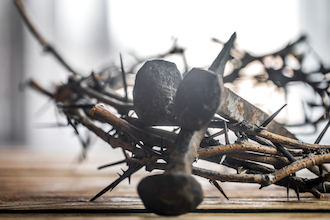 Released in January, Martin Scorsese’s latest movie, Silence, is set in the year 1639, during the Japanese persecution of Christians. The film is a moving mediation on suffering in the Christian tradition, particularly what it means that Jesus Christ, a “man of sorrows and acquainted with grief,” is “God with us” when we are weak, doubting and wracked with pain ourselves.
Released in January, Martin Scorsese’s latest movie, Silence, is set in the year 1639, during the Japanese persecution of Christians. The film is a moving mediation on suffering in the Christian tradition, particularly what it means that Jesus Christ, a “man of sorrows and acquainted with grief,” is “God with us” when we are weak, doubting and wracked with pain ourselves.
The film has been acclaimed for its organic imagery and minimalism, allowing the story to supply the necessary complexity that makes it so powerful. According to a review featured on Christianity Today:
Silence is beautifully minimalist, not nearly as stylized or frenetic as some of Scorsese’s earlier epics (think Wolf of Wall Street, The Departed, or Gangs of New York). Shot in muted hues by cinematographer Rodrigo Prieto and full of the sensory ambience of nature (birds, insect chirps, the crashing of waves), the film has a zen quality to it. As it moves along, Silence draws the viewer into an ever more contemplative space, gradually stripping away all else and focusing our gaze on Christ.
Sent from Portugal to seek the whereabouts of a fellow Jesuit priest (Liam Neeson) who had gone missing in Japan amidst intensifying persecution, Father Rodrigues (Andrew Garfield) and Father Garrpe (Adam Driver) go to Japan to minister to the persecuted Kakure Kirishitan (“Hidden Christians”) community and see if they can find the missing priest. Their faith is tested as the Grand Inquisitor Inoue (Issey Ogata) forces them to denounce their faith or watch Christians be tortured and killed.
The mesmerizing plot is nothing new, however, as it is adapted from the acclaimed novel, Silence:
Based on the acclaimed 1966 novel by Japanese Catholic writer Shusaku Endo, Silence is a book about 17th century Jesuit missionaries trying to make inroads for the gospel in the inhospitable “swampland” of Japan, facing intense persecution by a Japanese shogunate determined to wipe out Christianity’s influence in their realm.
Both book and movie received high praises from the Vatican, with director Martin Scorsese meeting with Pope Francis to discuss his new film.
According to Scorsese, the Pope told him he had read Endo’s novel and said, “I hope the story of the film, knowing the book, bears much fruit.”
[…] Silence is not just about mission. As Pope Francis implied in his remarks to Scorsese, the film is itself missional.
The director acknowledged the missional quality of the film, saying:
“Over the years I have been concerned about just distilling it to the essence of how one should live one’s life in imitation of Christ, so to speak. This film enabled me to not only think about this but to work it. For me the film isn’t finished.”
Building on the momentum created by the new film, internationally renowned artist Mako Fujimura released his new book Silence and Beauty along series of videos and discussion guides. Through these mediums Fujimara leads his audience on an exploration of the this ‘missional theme’ traced throughout Silence. According to Amazon:
Endo’s Silence took internationally renowned visual artist Makoto Fujimura on a pilgrimage of grappling with the nature of art, the significance of pain and his own cultural heritage. His artistic faith journey overlaps with Endo’s as he uncovers deep layers of meaning in Japanese history and literature, expressed in art both past and present. He finds connections to how faith is lived in contemporary contexts of trauma and glimpses of how the gospel is conveyed in Christ-hidden cultures.
In this world of pain and suffering, God often seems silent. Fujimura’s reflections show that light is yet present in darkness, and that silence speaks with hidden beauty and truth.
Whether you begin with the film, the novel, or Makoto Fujimura’s exploration, don’t miss the chance to take part in this beautiful, heart-wrenching story of suffering, zeal, and hope.



